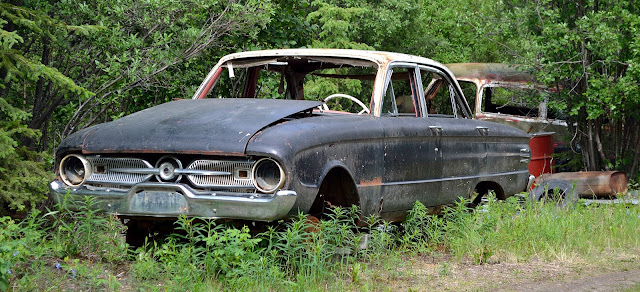At the end of the Silver Trail is a historic frontier town called Keno City. But, our first stop is Minto Bridge. In 1903 gold was discovered along Mayo Lake prompting the building of a summer road. Minto Bridge became a key distribution point for travellers and suppliers. As exploration continued more roads were built from Minto Bridge to gold-producing creeks and later to silver mining claims near Elsa.
As mining grew in the area, the settlement of Minto Bridge became more established. By the 1920’s roadhouses were located every 16 km from Keno City to Mayo. They provided meals and accommodations for drivers and miners as well as stables for the horses. At the time it cost as much to ship silver ore from Keno to Mayo, a distance of 60 km as it was from Mayo to San Francisco.
Increased traffic meant a need for a new steel bridge which was constructed in the 1930’s. Better roads meant the need lessened for road houses. In 1951 the settlement of Minto Bridge was flooded for a hydroelectric project. All that remains today is the bridge.
Further down the dirt road is the old abandoned town of Elsa. In 1924 Charlie Brefalt staked a lead-zinc-silver claim at Galena Hill which is just behind the town site. Over the years Elsa grew to a population of 700 people. Between 1945 and 1989 the mine produced 150 million ounces of silver, 490 million pounds of lead, and 370 million pounds of zinc. This little town was the top silver producer in all Canada during this time. Like most mining industries, communities rise and fall with the price of metals. After the mine closed in 1989, a small maintenance crew remained behind to protect the otherwise abandoned town. Today a crew is still there. Some say it’s because the area is so toxic they don’t want trespassers.
In 1919, John Kinman found silver ore above Lightning Creek, he staked some claims and built a cabin on the site where Keno City now sits. By 1920, Keno City was a busy community with cabins, stables, and a hotel. Today, Keno City is a year round home to approximately 12 individuals. The one road into Keno City is virtually impassable during the winter therefore, for 2-3 months they are isolated from the rest of the world. We walked the town, it was like stepping back 100 years.
 |
| A 1919 Cat |
What a great time. After supper we all sat by the fire until the rain started. The Yukon gov't does supply a shelter area quipped with a large pot bellied stove if wanted to seek shelter but the mosquitoes came out so it was time to go in. The little creators are the size of elephants...and that's the truth.










No comments:
Post a Comment